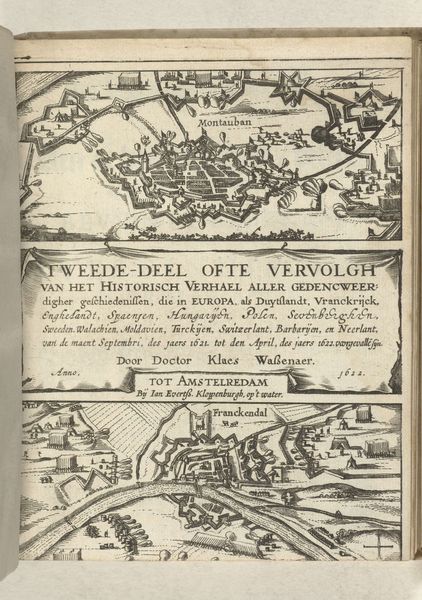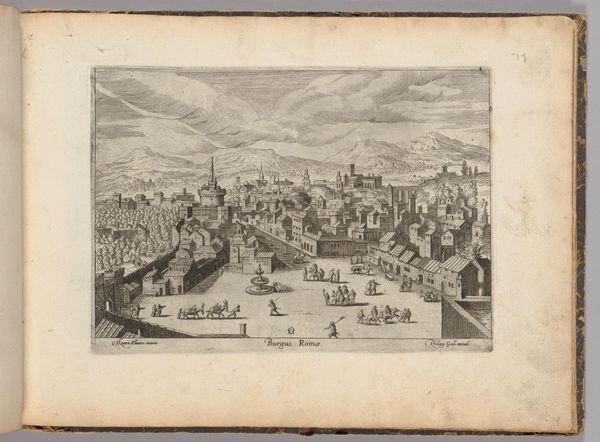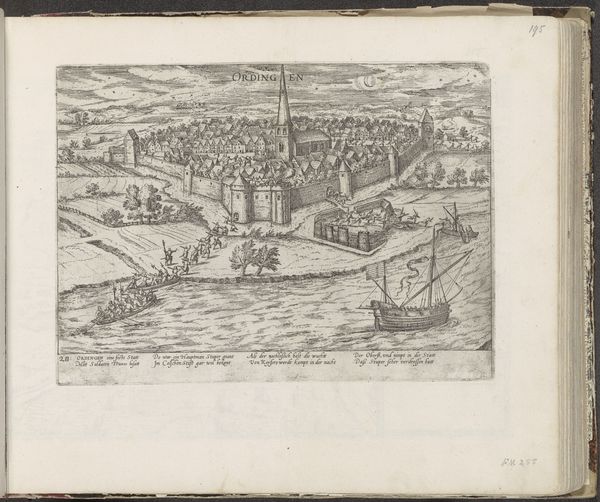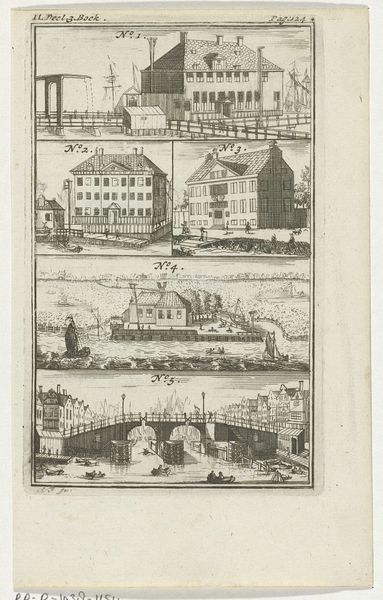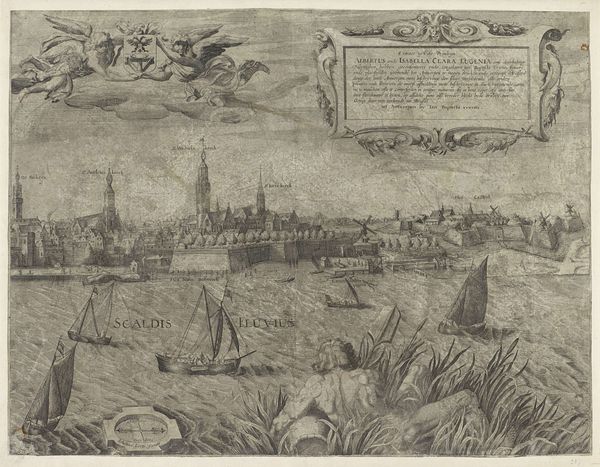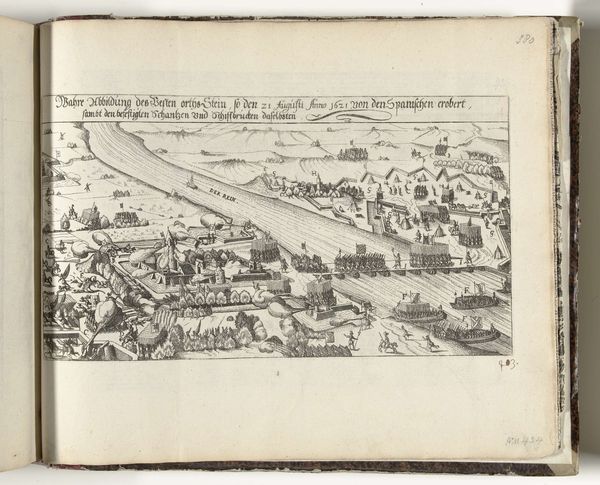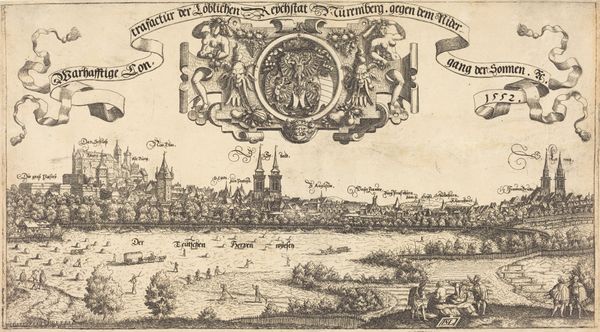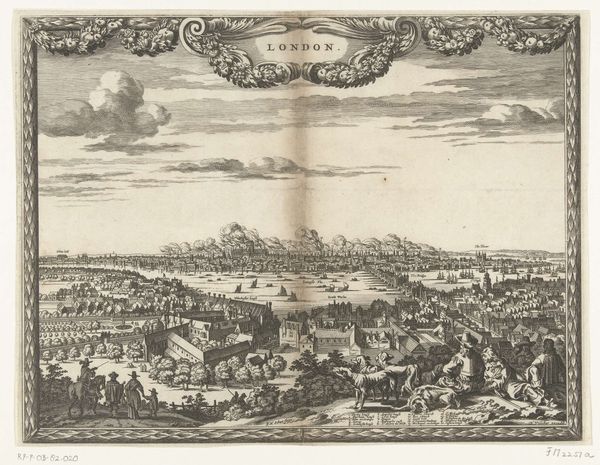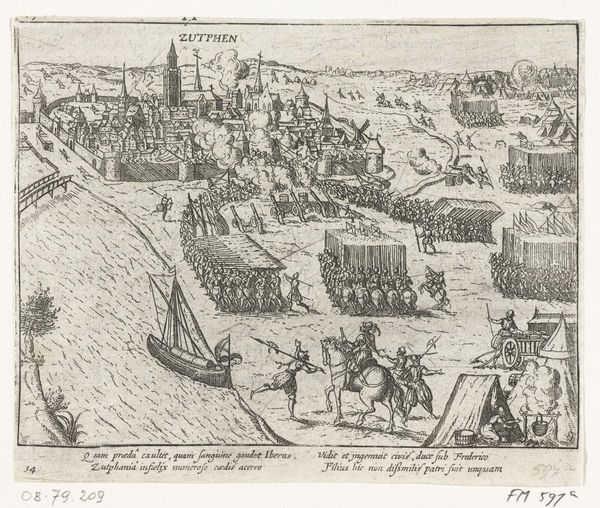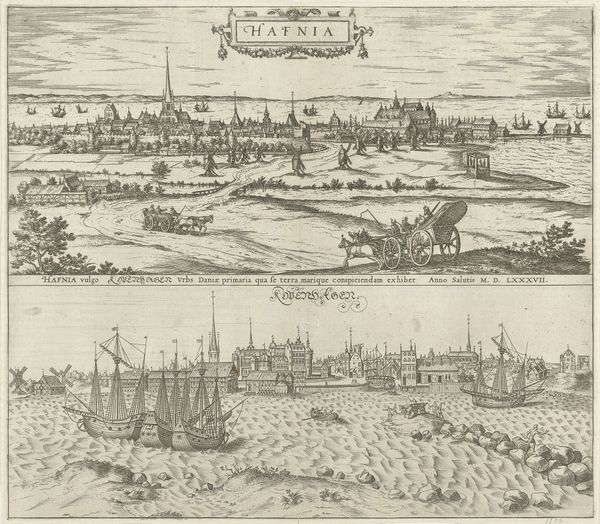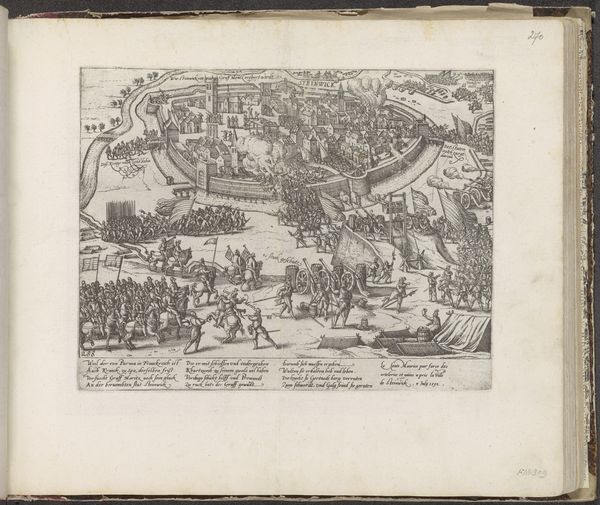
Titelblad van Historisch verhael, band 1 (dl. 1), 1621 1621 - 1622
0:00
0:00
print, engraving
#
baroque
# print
#
landscape
#
cityscape
#
history-painting
#
engraving
Dimensions: height 185 mm, width 145 mm
Copyright: Rijks Museum: Open Domain
Curator: This engraving, dating back to 1621-1622, serves as the title page for "Historisch Verhael," volume one. It was created by Claes Jansz. Visscher and it's held at the Rijksmuseum. What strikes you about it at first glance? Editor: There's a stark, almost brutal, quality to it. The density of figures, the rigidity of the architectural details… it evokes a sense of relentless order and controlled violence. Curator: The artwork falls into the Baroque style, showcasing a history painting theme and incorporating cityscape elements. Its symbolism must be so intentional and precise. I can almost hear echoes of power. The cities become symbols in themselves, these neat little rows of matching townhouses, or the soldiers all moving in lock step as if controlled by one will. I would bet this artist's personal politics are coming to bear through these artistic choices. Editor: The print certainly visualizes the sociopolitical order of 17th-century Europe, though in a way that feels disturbingly cold. I notice recurring architectural symbols—walls, gates, fortifications—each contributing to a larger symbolic language of defense and division. I see that as relating to the anxieties of the period; do we know much about where these images would be distributed and consumed? I find myself very concerned about whose gaze these symbols cater to, and which hierarchies they cement. Curator: Its impact lies in its ability to project a sense of unwavering authority and document historical conflicts with dramatic, yet almost sterile, precision. Considering it’s a book’s title page, this imagery really shapes how readers approach the historical narratives inside. What do you see in this print as standing apart from other contemporary works from the region and period? Editor: In contrast to more overtly propagandistic works, this title page offers a fascinating, and perhaps unintentional, glimpse into the era’s anxieties. It serves as a reminder that seemingly objective historical narratives are always framed by a particular worldview and a whole host of subjective biases. What stays with me is the unnerving feeling that power, in its most absolute form, is something ultimately detached from humanity.
Comments
No comments
Be the first to comment and join the conversation on the ultimate creative platform.
